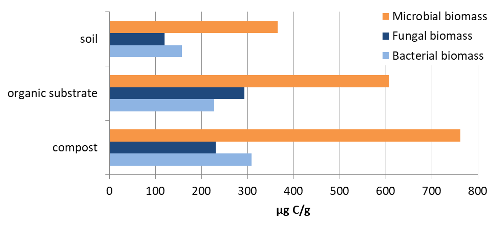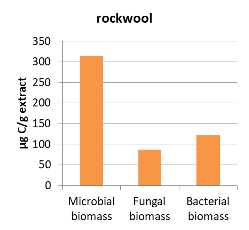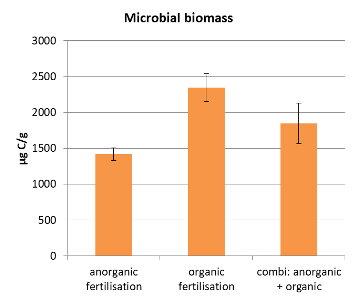Substantial differences in soil life
21 May 2020
How is the soil life in my nursery doing? This question puzzles more and more growers. Eurofins Agro has developed a new method - the Soil Life Monitor - for identifying different organisms in soil, various substrates, water and compost. The method has already been introduced for outdoor crops, and will become available for greenhouse soil during the summer of 2020 and for water later this year. Eurofins Agro conducted validation research in strawberries, among other crops.
An active soil life stimulates plant growth and development as it makes nutrients available to the crop, produces humus and contributes to a better soil structure. Additionally, when soil life is well developed, harmful fungi and bacteria multiply less rapidly. A rich and active soil life promotes the soil’s general disease resistance and the plant’s resilience.
Unique composition of cell walls
Soil life consists of a large number of different organisms, such as fungi, bacteria, protozoa, mites, nematodes, pot worms and earthworms. Micro-organisms like fungi and bacteria in the soil cannot be seen with the naked eye. Until now, these organisms were measured by microscopic examination.
Eurofins Agro's new method for measuring soil life is based on the analysis of fatty acids in the cell membranes of living micro-organisms, using gas chromatography. This concerns the so-called phospholipid fatty acids (PLFA). The PLFA composition of the cell wall is unique to each of the groups. Insight into which PLFAs are found in a sample of the rooting medium provides information about the total amount of living biomass in the soil and which groups of micro-organisms are present. PLFAs degraded quickly after cell death, so that the analysis gives an indication of the amount of living biomass. The method is internationally recognised and is widely used in scientific research.
Test of horticultural materials
In oder to validate the method in 2019, PLFA analysis has been performed on on more than 500 samples from Dutch nurseries. This included common rooting media like organic substrates (potting soil, peat/coconut), greenhouse soil, compost and drain water. This analysis determined, among other things, the total microbial biomass, fungal biomass and bacterial biomass. The differences are considerable (see Figure 1). In the graph, the total microbial biomass is larger than the sum of the fungal and bacterial biomass, because it also includes the other micro-organisms such as protozoa.
The PLFA analysis was also carried out on extracts from rockwool plugs during and after cultivation. The relationship between fungi and bacteria in rockwool is shown in Figure 2.


Figure 1: PLFA determination of the amount of microbial biomass, fungal biomass and bacterial biomass (in µg C per gram of substrate) in various rooting media. Source: Eurofins Agro 2019.

Figure 2: PLFA determination of the amount of microbial biomass, fungal biomass and bacterial biomass (in µg C per gram of extract) in rockwool. Source: Eurofins Agro 2019.
To assess whether the PLFA analysis can demonstrate differences between various treatments, PLFA samples were also taken in a number of tests during the validation process. One of the tests was a plant health test in strawberries, done by Koppert Biological Systems. The purpose of this test was to improve the plant resilience by using different fertilisation strategies. The stimulation of soil life is an essential part of this test (see Figure 3).

Figure 3: PLFA determination of the amount of microbial biomass (in µg C per gram of potting soil) in inorganic, organic and combined fertilization. Source: Koppert Biological Systems 2019.
Soil Life Monitor
This research leads Eurofins Agro to conclude that the PLFA method offers good possibilities for identifying soil life and measuring differences between substrates and departments. Soil life analysis – the Soil Life Monitor – has been introduced for outdoor cultivation since the spring of 2020. Greenhouse soil samples can already be analysed using this package. Several specific packages for greenhouse horticulture (e.g. rockwool, water) will become available in the course of 2020.
More information
Please contact horti@eurofins.com
